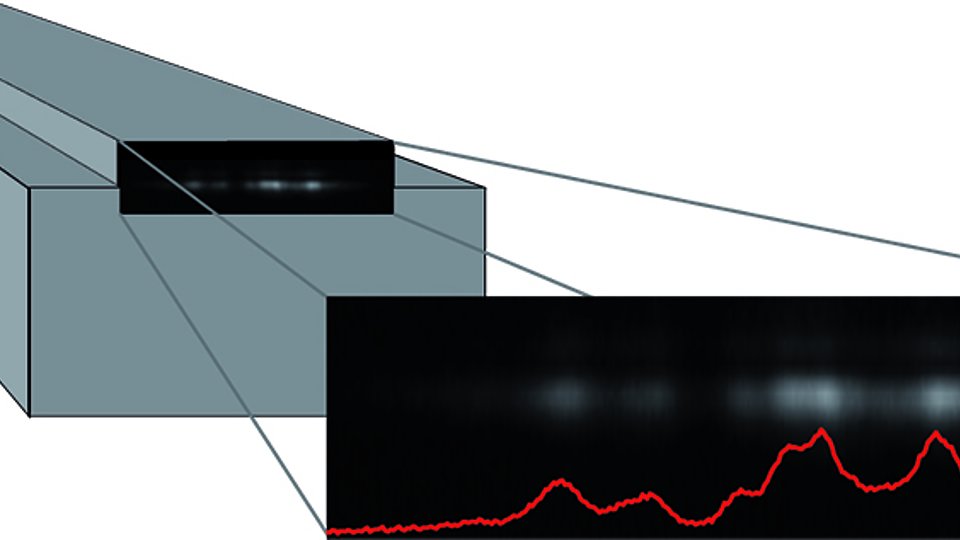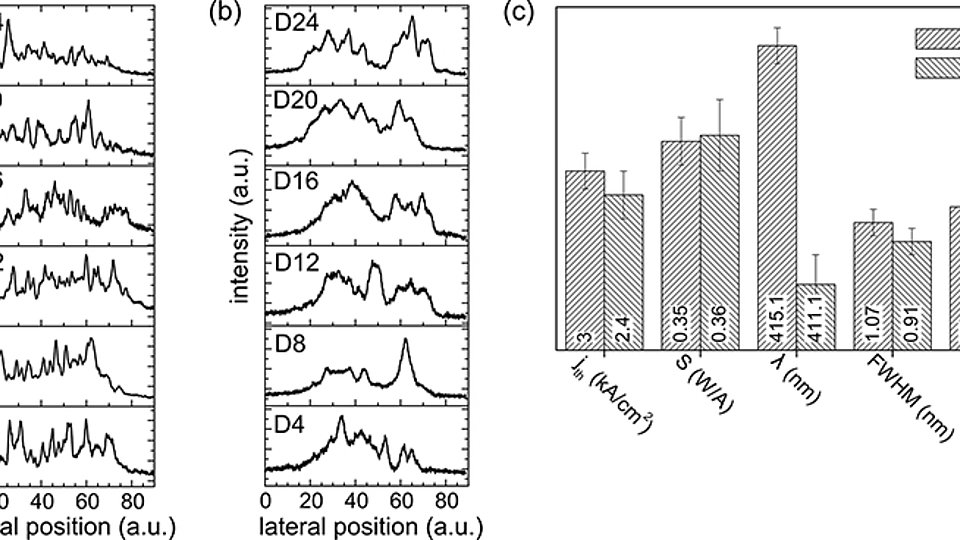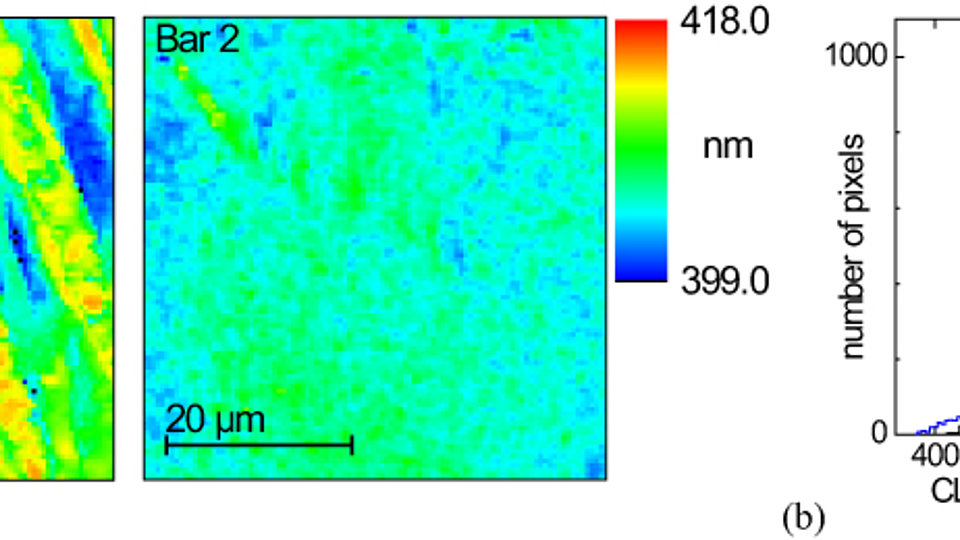Filamentation and beam inhomogeneities in GaN broad area laser diodes
Fig. 1: Schematic of a laser diode and exemplary intensity distribution on the facet; lateral filamentation is clearly visible in the magnified image
Fig. 2: Lateral intensity distribution for different 40 µm wide laser diodes from bar 1 (a) and 2 (b), measured laser parameters threshold current jth, slope efficiency S, emission wavelength λ, peak width FWHM, and DOF (c)
Blue (Al,In)GaN-based laser diodes are used in various commercial applications. However, high-power lasers often show severe intensity fluctuations in the lateral beam profile due to their broad emitting area (cf. Fig. 1). The fluctuations are caused by inhomogeneities of the refractive index, e.g., because of an inhomogeneous carrier density or temperature. The phenomenon known as filamentation has been investigated at the FBH for several laser bars from one epitaxial wafer.
It has been observed that lasers from one bar, i.e., from the same area on the wafer show a similar number and width of intensity maxima and minima. In contrast, lasers from different areas of the wafer exhibited significant differences in the homogeneity of the lateral beam profile. To quantify these observations, the DOF (degree of filamentation) can be defined as the number of intensity maxima per 40 µm. According to this definition, bar 1 shown in Fig. 2a features a DOF of 12±2 while bar 2 (Fig. 2b) has a DOF of 6±1, confirming the visual impression.
In addition, a stronger filamentation (higher DOF) coincides with a higher threshold current density jth, a lower slope efficiency S, a redshift in the emission wavelength λ, and a broader full width at half maximum (FWHM ) of the emission spectrum, as can be seen in Fig. 2c.
By means of spectrally and spatially resolved cathodoluminescence measurements the peak emission wavelength of the quantum wells at different positions on one bar and on different bars can be compared. Fig. 3 shows comparative wavelength maps from two bars. Clearly, the wavelength on bar 1 varies much stronger in the probed area (50 × 50 µm) than on bar 2. These significant differences in the quantum well band gaps explain all previously described effects. The influence on the basic parameters (jth, S, λ, FWHM) has already been predicted theoretically by Vurgaftman et al. (IEEE J. Sel. Top. Quantum Electron. 3, 475 (1997)) using simulations. The effects are, in principle, caused by a lower differential gain (jth), an enhanced absorption of high-energy photons in regions of lower band gap energy (S, λ), the diffusion of charge carriers in regions with smaller band gap (λ), and a broadening of the gain spectrum (FWHM). The enhanced filamentation of the beam profile has been investigated for the first time and can be explained by a reduced carrier diffusion length due to enhanced band gap fluctuations.
The presented results allow for a better understanding of the interplay of epitaxial layer homogeneity, basic laser parameters, and filamentation effects. This is an important step towards the improvement of high-power (Al,In)GaN-based laser diodes.
Publication
J. Jeschke, U. Zeimer, L. Redaelli, S. Einfeldt, M. Kneissl, and M. Weyers, "Effect of quantum well non-uniformities on lasing threshold, linewidth, and lateral near field filamentation in violet (Al,In)GaN laser diodes", Appl. Phys. Lett., vol. 105, no. 17, 173501 (2014).


